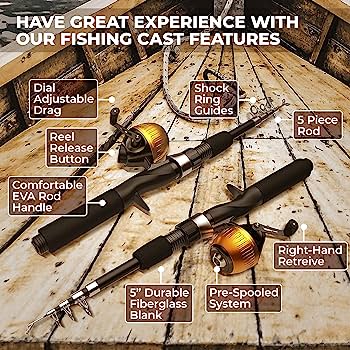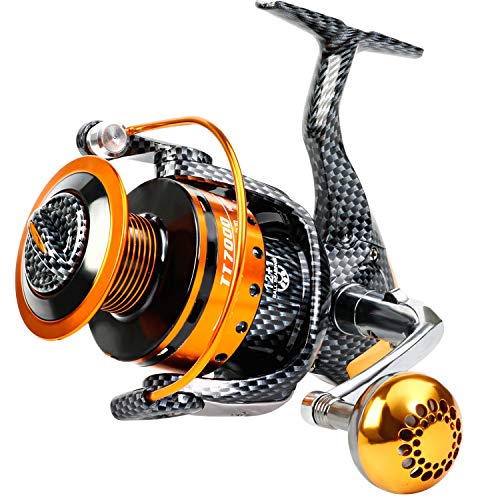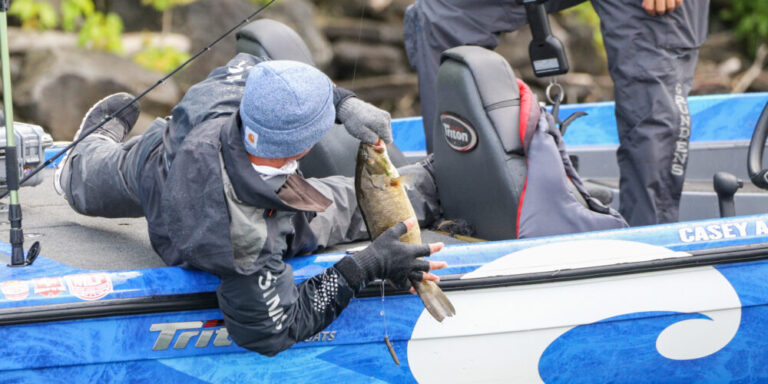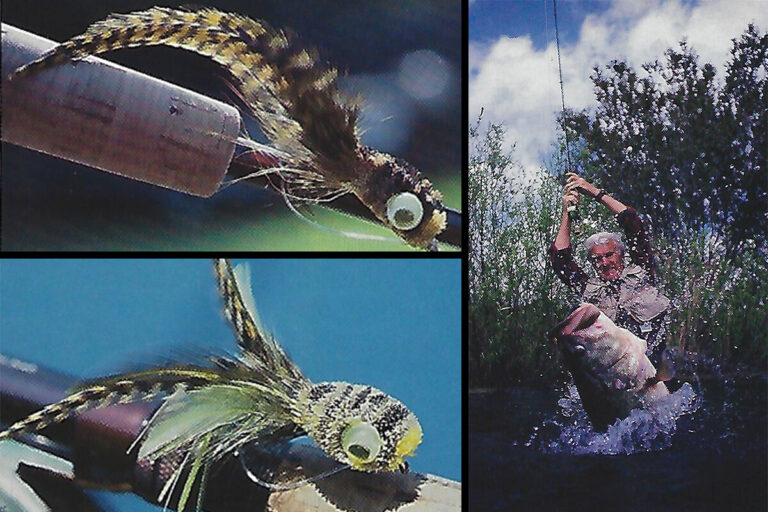To put weights on a fishing line, attach them about 12-18 inches above the hook. Fishing weights are essential for helping your bait sink to the desired fishing depth.
Placing the weights at the appropriate spot on your fishing line is crucial for achieving the desired fishing technique and targeting specific fish species. By attaching the weights an ideal distance above the hook, usually around 12-18 inches, you allow your bait to sink naturally while still maintaining control over the line.
This positioning ensures that the weights do not interfere with the presentation of your bait and provides the best chance of attracting fish. Following this simple guideline will help you optimize your fishing experience and increase your chances of a successful catch.
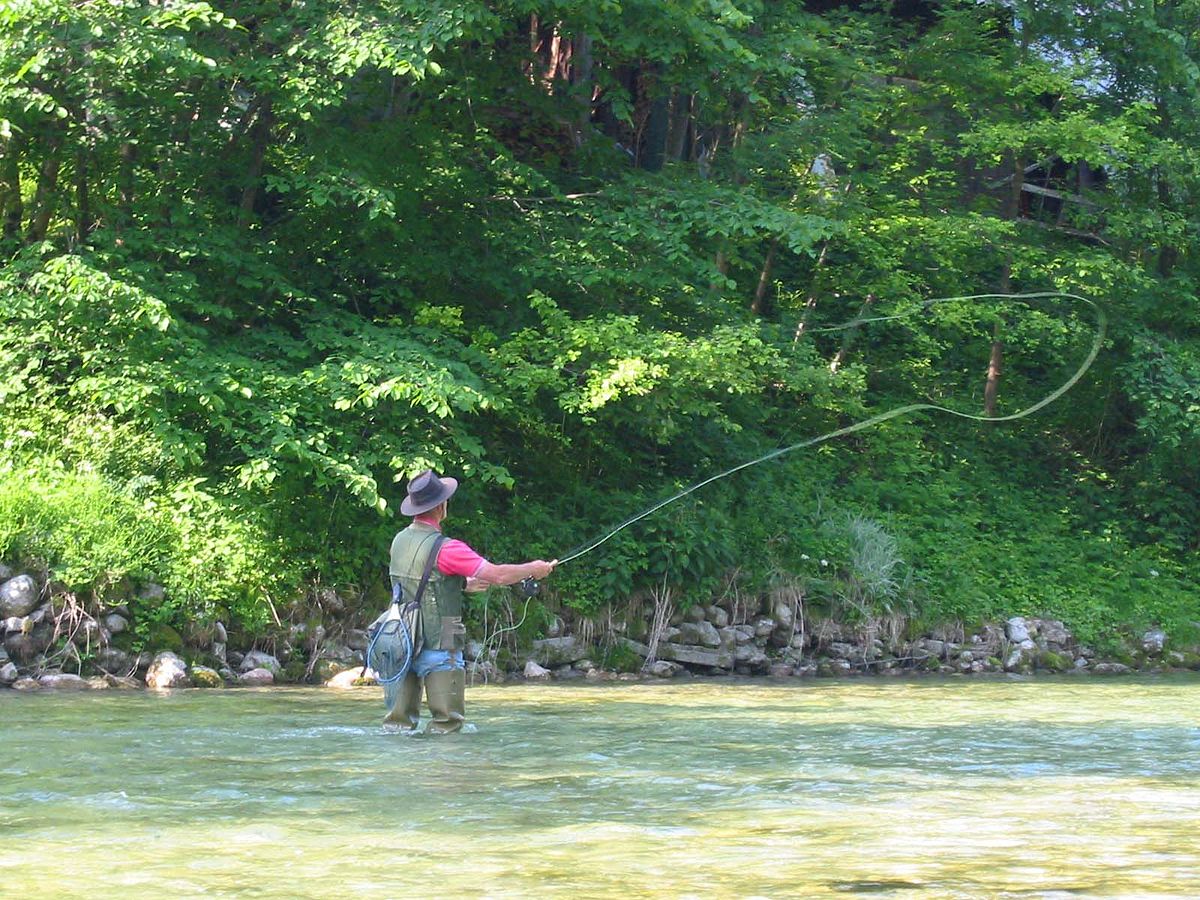
Credit: en.wikipedia.org
Introduction To Weights Placement On A Fishing Line
Importance Of Proper Weight Placement
Weight placement on a fishing line can have a significant impact on your fishing success. Here are some key points to understand the importance of proper weight placement:
- Balancing the line: The placement of weights on a fishing line helps to balance the entire setup. This ensures that your bait or lure is presented naturally in the water, increasing your chances of attracting fish.
- Depth control: The position of the weights determines how deep your bait goes in the water. By placing the weights strategically, you can target different depths to reach where the fish are actively feeding. This is particularly important when fishing in different water conditions or targeting specific species.
- Casting distance: Proper weight placement can also enhance your casting distance. By distributing the weights effectively, you can achieve longer and more accurate casts. This allows you to reach areas that are further away and potentially hold more fish.
- Sensitivity and bite detection: The placement of weights affects the sensitivity of your fishing line. When weights are properly positioned, you can easily detect when a fish bites or when there is any movement on the line. This ensures that you can respond quickly and increase your chances of hooking the fish.
Factors To Consider When Choosing Weight Placement
Choosing the right weight placement requires considering various factors. Here are some key points to keep in mind:
- Fishing technique: Different fishing techniques, such as bottom fishing, trolling, or casting, require specific weight placements. The technique you use will determine where and how the weights should be placed on the fishing line.
- Water depth and current: The depth of the water you’re fishing in and the strength of the current play a crucial role in weight placement. Deeper water may require heavier weights to reach the desired depth, while strong currents may call for additional weights to maintain control and stability.
- Bait or lure type: The type of bait or lure you’re using also influences weight placement. Some baits may require additional weight to sink effectively, while others may have built-in weights. Consider the characteristics and behavior of your bait to determine the optimal placement for the weights.
- Species and conditions: Different fish species have specific feeding habits and preferences. Research the species you’re targeting to understand their preferred depth and feeding patterns. Additionally, variations in weather, water temperature, and time of day can impact weight placement.
Understanding how weight placement affects fishing success is vital for any angler. By considering factors such as balancing the line, depth control, casting distance, and sensitivity, you can make informed decisions when choosing weight placement on your fishing line. Keep in mind the fishing technique, water depth and current, bait or lure type, and specific species and conditions to optimize your chances of a successful catch.
Types Of Weights For Fishing Lines
When it comes to fishing, using the right weights on your fishing line is crucial for successful casts and catching fish. There are various types of weights available, each with its own benefits and drawbacks. Understanding these options will help you choose the right weight for your fishing needs.
Let’s take a closer look at the different types of fishing weights:
Split Shot Weights
- These are small, round weights that can be easily attached to the fishing line.
- They work well for adjusting the depth at which your bait or lure sinks.
- Split shot weights allow for easy customization and can be added or removed as needed.
- However, they can cause line twist and may slip on the line if not properly secured.
Egg Sinkers
- Egg sinkers are shaped like eggs or ovals and have a hole running through the center.
- They are great for holding your bait in a specific area.
- Egg sinkers slide freely up and down the line, allowing for natural movement of your bait.
- However, they can get snagged easily and may require frequent repositioning.
Bullet Weights
- Bullet weights are shaped like, you guessed it, bullets!
- These weights have a pointed end for easy penetration through the water.
- They are excellent for fishing in heavy cover or when you need to make long casts.
- Bullet weights can be rigged texas-style, allowing for weedless presentations.
- However, they tend to attract more weeds and can cause the bait to spin during retrieval.
Bank Sinkers
- Bank sinkers have a flat, rectangular shape with a hole on one end for the fishing line.
- They are commonly used in freshwater and saltwater fishing.
- Bank sinkers work well in strong currents, as their flat shape helps anchor the line to the bottom.
- However, they can roll around on the bottom and get stuck in rocks or debris.
Pyramid Sinkers
- Pyramid sinkers are triangular in shape, with flat sides and a hole at the top.
- These weights are designed to hold your bait or lure in place, even in strong currents.
- Pyramid sinkers dig into the sandy or muddy bottom, providing a secure anchor.
- However, they can be difficult to retrieve if snagged on underwater structures.
Choosing the right weight for your fishing needs will depend on various factors such as water conditions, target fish species, and fishing techniques. Experimenting with different weights and understanding their benefits and drawbacks will help you become a more successful angler.
So next time you head out to the water, consider these different types of fishing weights and make an informed decision. Happy fishing!
1. Weight Placement For Shore Fishing
Shore fishing is a popular method for anglers to enjoy their favorite pastime. One important factor that can greatly impact your success is where you place the weights on your fishing line. Optimal weight placement for casting distance and accuracy can make a significant difference in your overall fishing experience.
Additionally, adjusting weight placement based on water conditions can help you adapt to changing environments and increase your chances of reeling in a catch. Let’s dive deeper into these factors and techniques to improve your shore fishing game.
Factors To Consider When Shore Fishing
When it comes to shore fishing, several factors should be considered before determining where to place the weights on your fishing line. These factors include:
- Targeted fish species: Different fish species have different feeding habits and preferences for water depths. Understanding the behavior of your target species will help you determine the most suitable weight placement.
- Bottom structure: The composition and structure of the lake or riverbed play a crucial role in deciding where to place your weights. If there are submerged rocks, vegetation, or other obstacles, you may need to adjust your weight placement accordingly.
- Water depth and current: The depth of the water and the strength of the current will affect how your weights behave. Deeper water might require additional weight closer to your bait, while stronger currents may necessitate placing the weight further up the line.
Optimal Weight Placement For Casting Distance And Accuracy
Achieving optimal weight placement is essential for maximizing your casting distance and accuracy. Consider the following tips:
- Begin by attaching your weight to the end of your main fishing line using a suitable knot, such as the clinch knot or palomar knot.
- Place the weight six to twelve inches above your bait or lure. This distance will vary depending on the type of bait and the fish species you are targeting.
- Ensure the weight is secured tightly to the line to prevent it from sliding during casting or retrieving.
- If you’re using multiple weights, space them evenly along the line to maintain balance and prevent tangles.
- Experiment with different weight sizes and placements to find what works best for your fishing style and conditions.
Techniques For Adjusting Weight Placement Based On Water Conditions
Adapting your weight placement based on water conditions can greatly improve your chances of success. Consider the following techniques:
- Shallow water: In shallow water, adjust your weight placement towards the end of your line to allow your bait to sink naturally. This placement helps prevent spooking fish and allows for more accurate casts.
- Deep water: When fishing in deep water, moving the weight closer to your bait can help get it down to the desired depth more quickly and effectively.
- Strong currents: In areas with strong currents, placing the weight further up the line can help anchor your bait and maintain its position against the current.
- Weedy or rocky areas: If you’re fishing in areas with vegetation or rocks, consider using weedless or snag-proof weights to prevent constant snags and improve your chances of landing a fish.
By considering the factors mentioned above and employing the optimal weight placement techniques for casting distance and accuracy, you can enhance your success rate when shore fishing. Remember to experiment with different setups and be open to adjusting your weight placement based on the prevailing water conditions.
Happy fishing!
2. Weight Placement For Boat Fishing
Differences Between Shore Fishing And Boat Fishing
When it comes to fishing, the choice between shore fishing and boat fishing can greatly impact your approach and techniques. Understanding the key differences between the two will help you make informed decisions when it comes to weight placement for boat fishing.
- Shore fishing:
- Limited casting range due to the fixed position
- Greater reliance on the weight to ensure proper bait presentation
- Steady water conditions with minimal movement
- Less control over the depth and speed of the bait
- Boat fishing:
- Increased casting range and flexibility in choosing fishing spots
- Weight placement is crucial for maintaining bait position and detecting bites
- Constant movement from the boat and varying water conditions
- Ability to adjust weight placement based on depth and current
Strategies For Weight Placement When Fishing From A Boat
When fishing from a boat, proper weight placement is key to achieving optimal results. Consider the following strategies to ensure success:
- Adjusting weight according to depth and current:
- Use heavier weights when fishing in deeper water to maintain bait position
- Lighten the weight when fishing in shallower areas to prevent sinking too quickly
- Take into account the strength and direction of the current to determine the ideal weight placement
- Placing weights closer to the hook:
- By positioning the weight closer to the hook, you can achieve a more natural presentation of the bait
- This setup allows the bait to move freely, enticing fish to strike
- Experiment with different distances between the weight and hook until you find the most effective placement for your target species
- Using sliding or adjustable weights:
- Sliding weights, such as egg sinkers or sliding bullet weights, offer flexibility in weight placement
- These adjustable weights allow you to adapt to changing water conditions and find the optimal balance between depth control and bait movement
- Incorporating carolina or texas rig setups:
- The carolina rig and texas rig are popular techniques for boat fishing that involve specific weight placements
- With the carolina rig, the weight is positioned ahead of the hook, offering better sensitivity and reducing the risk of snags
- The texas rig utilizes a bullet-shaped weight embedded in the bait, providing weedless presentation and allowing for accurate casts
Accommodating for boat movement and current while placing weights ensures that your bait stays in the strike zone and attracts the attention of fish. Experiment with different weight placements, adapt to changing conditions, and fine-tune your approach to maximize your chances of success when boat fishing.
3. Weight Placement For Different Fishing Techniques
Weight Placement For Bait Fishing
When it comes to bait fishing, where you place the weights on your fishing line can greatly impact your success in catching fish. Here are some key points to keep in mind:
- Use a sliding weight setup: This allows the fish to take the bait without feeling resistance from the weight. It also enables you to detect subtle bites more effectively.
- Place the weight above the hook: By positioning the weight above the hook, you allow the bait to appear more natural as it drifts along the water. This also helps prevent the weight from snagging on rocks or debris.
- Adjust the weight based on conditions: In areas with strong currents or deep waters, you may need to increase the weight to ensure your bait stays near the bottom where fish are often found. Conversely, in calm or shallow waters, lighter weights are sufficient.
- Consider using a carolina rig: This popular rig involves placing a weight a few feet above the hook, which allows the bait to float slightly above the bottom and attract fish’s attention.
Weight Placement For Lure Fishing
Lure fishing requires a different approach when it comes to weight placement. Here are some important factors to consider:
- Use a lightweight lure: Since the lure itself provides the attraction, heavy weights are not necessary. Opt for lighter lures that mimic the movements and appearance of natural prey.
- Attach weight to the lure or line: Depending on the fishing technique and lure type, you may choose to attach small weights directly to the lure or use split shot weights along the line. This allows you to control the depth and action of the lure.
- Experiment with weight placement: Depending on the fish species you’re targeting and their preferred feeding depths, you may need to adjust the position of the weight. Try placing it closer to the lure for shallow-water fishing or further up the line for deeper waters.
- Consider using a drop shot rig: This technique involves attaching the weight at the end of the line with the lure suspended above it. This setup mimics a natural prey and can be highly effective, especially for finicky or bottom-dwelling fish.
Adjusting Weight Placement For Different Fish Species
Different fish species have varying feeding behaviors and preferences, which may require you to adjust the weight placement accordingly. Here’s what you need to know:
- Study the habits of the target species: Research the specific fish species you’re targeting to understand their preferred habitats, feeding depths, and behaviors. This knowledge will help you determine the ideal weight placement.
- Adapt to the feeding zone: Some fish species, like bass, tend to stay close to cover or structures, while others, like trout, may roam more freely in open waters. Adjust the weight placement to match the feeding zone of the target species.
- Experiment with different setups: Don’t be afraid to try different weight placements until you find the most effective one. Use trial and error to determine what works best for each specific fish species.
Techniques For Modifying Weight Placement For Specific Fishing Techniques
Depending on the fishing technique you’re using, there are additional considerations for weight placement. Here are some techniques you can employ:
- Drift fishing: When drift fishing, adjust the weight placement to maintain contact with the bottom while allowing the bait to drift naturally with the current. Use enough weight to keep your line vertical and prevent it from drifting too far off course.
- Bottom bouncing: This technique involves allowing the weight to bounce along the bottom as you retrieve the lure. The weight placement should be close to the lure, enabling it to mimic the movement of prey and attract fish.
- Jigging: For jigging, the weight is typically incorporated into the lure itself. Adjust the weight size and placement based on the depth you’re fishing and the desired action of the lure.
- Trolling: When trolling, the weight placement is typically predetermined by the type of lure or rig being used. Follow the manufacturer’s recommendations for optimal weight placement.
Remember, weight placement plays a crucial role in fishing success. By understanding how to position weights for different techniques and fish species, you’ll be well-equipped to maximize your chances of reeling in the big catch.
Tips And Tricks For Mastering Weight Placement On A Fishing Line
Fishing with the right weight placement on your line can make a world of difference in your fishing success. Whether you’re targeting bass in freshwater or going after saltwater species like snapper or grouper, understanding where to put the weights on your fishing line is crucial.
Here are some tips and tricks to help you master weight placement and boost your chances of reeling in that trophy catch.
Experimenting With Different Weight Positions
- Start by attaching the weight a foot or two above your bait or lure. This helps keep the bait near the bottom where the fish are often lurking.
- If you’re fishing in heavy cover or thick vegetation, try using a weightless or weedless setup to avoid snagging.
- Adjust the weight’s position on the line to vary the sink rate and action of your bait. Moving it closer to the bait will make it sink faster, while moving it farther away can create a more subtle, slower sink.
Balancing Weight Placement With Other Fishing Variables
- Consider the type of fishing you’re doing and match the weight placement to the fishing technique. For example, if you’re using a finesse technique, placing the weight closer to the bait can help maintain a natural presentation.
- Take into account the depth of the water you’re fishing. If you’re targeting fish in deep waters, you may need to adjust the weight placement to ensure your bait reaches the desired depths.
- Pay attention to the current and wind conditions. Adjusting the weight placement can help you present your bait effectively against the current or in windy conditions.
Fine-Tuning Weight Placement For Different Fishing Conditions
- Experiment with different weights to find the optimal one for the fishing conditions. Lighter weights work well in calm waters, while heavier weights are better for choppy or fast-moving waters.
- When fishing in clear or shallow waters, consider using a bullet weight positioned away from the bait to create a more stealthy presentation.
- In murky or muddy waters, placing the weight closer to the bait can help generate more vibrations and attract fish.
Learning From Experienced Anglers And Seeking Guidance
- Connect with experienced anglers or join fishing communities to learn from their expertise. They can provide valuable insights into weight placement based on specific fishing spots and target species.
- Attend fishing clinics or workshops where seasoned anglers share their knowledge and offer guidance on weight placement techniques.
- Keep an open mind and be willing to try new techniques suggested by experienced anglers. Their expertise can help accelerate your learning curve.
Conclusion
Understanding where to place weights on a fishing line is crucial for successful fishing. By weighting your line properly, you can control the depth at which your bait or lure is fishing, increasing your chances of attracting and catching fish.
The two primary methods for placing weights on a fishing line include using split-shot weights or using carolina rig-style weights such as bullet weights or egg sinkers. The specific placement of the weights will depend on the fishing conditions, such as the depth of the water and the type of fish you are targeting.
Experimenting with different configurations and adjusting as needed will help you find the most effective setup for your fishing needs. Remember to consider the weight of your lure or bait as well, as this can affect how the weights are distributed and the overall performance of your fishing line.
So, next time you head out to the water, be sure to pay attention to where you place those weights and watch your fishing success soar.

